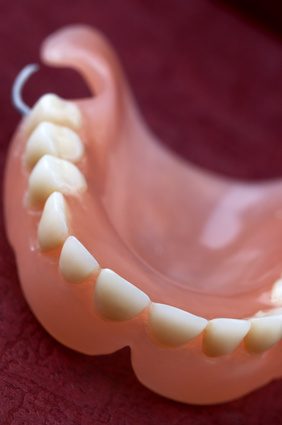The gag reflex that you may encounter when you first wear false teeth is normal. Your gag reflex helps you to protect yourself from dangerous substances entering your body. The gag reflex is often activated when the roof of your mouth or the back of your tongue or throat area is touched, according to The Newcastle upon Tyne Hospitals Organization.
Your gag reflex is hyper-sensitized by your awareness and thought, explains Pacific Dental Care dentists. When you are first trying to become accustomed to false teeth or dentures, your gag reflex may be due to your increased awareness of the dentures and the areas they touch.
The gag reflex is a learned or conditioned response reports Newcastle Hospitals. This is evident because you can tolerate food touching these areas when you are eating. Because it is a learned response, you do have the power to re-condition yourself.
Most gag reflex issues will disappear as you get used to dentures, but there are some things you can do to hasten the process.
Things You’ll Need
- Water
- Hard Candy
- Small Toothbrush
Other People Are Reading
Form a seal. This helps you accommodate the palate portion of your dentures. You can practice protecting your airway from the gag reflex by breathing through your nose, lifting the back of your tongue and touching it to the back of your palate (the soft tissue along the roof of your mouth). Try it again with your mouth open a bit. Practice this at least once a day until you can comfortably hold the position.
Desensitize with a toothbrush. Rub a small toothbrush behind your front teeth until it is tolerable. Then begin massaging the front of your palate with the toothbrush until that is tolerable. Don’t rush it, writes Newcastle dentists, because you will activate and condition your gag reflex in ways that you don’t want to. Massage your palate farther and farther back, allowing time for desensitization each time.
Drink lots of water. Much of the problem with the gag reflex and false teeth occurs because you are not used to having something in your mouth that isn’t food, explains Pacific Dental Care dentists. Your brain is conditioned to think of things in your mouth as food and activates your salivary glands. Excess saliva can trigger the gag reflex. Drink lots of water, says Dr. Frank Wiebelt in “The Doctor’s Book of Home Remedies II,” to wash away excess saliva.
Suck on hard candies. They gravitate to the roof of your mouth and can help resolve the dry mouth that can occur with new dentures as well as getting you used to objects touching your palate.
